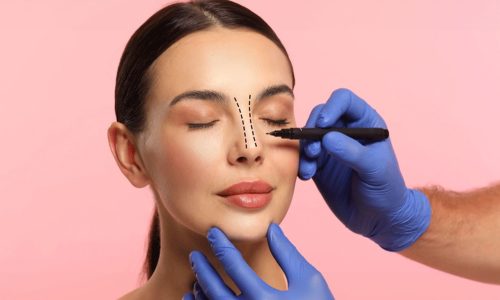Understanding Nasal Concha and Their Role in Breathing
Inside the nasal cavity, there are structures called nasal conchae or turbinates, which help regulate airflow and humidity. These small bony and soft tissue structures play a crucial role in filtering, warming, and humidifying the air we breathe. When these turbinates become enlarged — a condition known as nasal concha hypertrophy — they can cause nasal obstruction, leading to breathing problems, chronic nasal congestion, and overall discomfort.
Why Do Turbinates Swell?
Main Causes of Nasal Concha Hypertrophy
There are several reasons why nasal turbinates swell. Let’s explore the most common causes:
1. Allergies and Environmental Irritants
Persistent exposure to allergens such as dust, pollen, pet dander, or pollution may lead to turbinates swelling. In response, the nasal lining becomes inflamed, triggering chronic nasal congestion and difficulty breathing.
2. Chronic Infections and Sinusitis
Repeated or long-term infections in the sinuses can cause inflammation in the turbinates, leading to nasal concha hypertrophy. This often goes hand in hand with post-nasal drip, sinus pressure, and headaches.
3. Structural Issues like Deviated Septum
A deviated septum can alter the airflow in the nose. As one side receives more airflow, the turbinate on that side may enlarge over time to compensate, causing nasal obstruction and imbalance in nasal breathing.
4. Hormonal Changes
Hormonal fluctuations due to pregnancy, puberty, or certain medications may also cause turbinates to swell, especially in individuals with pre-existing sensitivities.
5. Concha Bullosa
One of the lesser-known causes of enlarged turbinates is a condition called concha bullosa, which is the presence of an air-filled cavity within the turbinate. This structural anomaly can press against other nasal structures and create significant obstruction.
Symptoms of Enlarged Turbinates
If you’re wondering whether you might have turbinate hypertrophy, here are the symptoms to look for:
- Persistent nasal congestion
- Mouth breathing, especially at night
- Snoring or sleep disturbances
- Reduced sense of smell
- Frequent sinus infections
- Headaches or facial pressure
These symptoms can significantly affect your quality of life, especially when left untreated.
Treatment Options: How Is Turbinate Hypertrophy Managed?
At Dr. Mehmet Durmuşoğlu’s clinic in İzmir, each case is evaluated individually to find the most suitable treatment plan. Here are some of the options available for turbinate hypertrophy treatment:
1. Medical Management
Initially, nasal sprays, antihistamines, and decongestants may be used to control swelling. However, these offer only temporary relief and are not a long-term solution for nasal concha hypertrophy.
2. Radiofrequency Turbinate Reduction
Radiofrequency turbinate reduction is a minimally invasive procedure that reduces turbinate size using controlled radio waves. It offers quick recovery and less bleeding, making it ideal for many patients.
3. Concha Surgery; Turbinate Reduction Surgery
In cases where non-invasive treatments do not offer relief, turbinate reduction surgery or concha surgery is considered. This surgery can be performed using various techniques, including concha ablation, laser, or ultrasonic devices.
4. Combined Procedures with Rhinoplasty
For patients also seeking nasal aesthetics, procedures like functional rhinoplasty or septoplasty are often combined with turbinate reduction. This approach not only improves breathing but also addresses cosmetic concerns.
What to Expect After Turbinate Reduction Surgery
- Recovery After Turbinate Surgery
Recovery varies depending on the surgical technique used. Most patients return to daily activities within a few days. Mild congestion, swelling, or crusting may occur during healing but typically resolves within a few weeks.
- Risks of Turbinate Surgery
Although rare, potential risks include:
- Bleeding
- Infection
- Over-reduction leading to nasal dryness or empty nose syndrome
- Adhesions; Scar tissue formation
Choosing an experienced surgeon like Op. Dr. Mehmet Durmuşoğlu minimizes these risks, ensuring both safe results and patient satisfaction.
Why Choose Dr. Mehmet Durmuşoğlu for Turbinate Reduction in İzmir?
As a rhinoplasty and ENT specialist in İzmir, Dr. Mehmet Durmuşoğlu offers a unique blend of aesthetic understanding and functional expertise. His personalized approach ensures that patients receive the most suitable care, especially when dealing with conditions like turbinate hypertrophy, concha bullosa, or deviated septum.
Using advanced technologies such as Ultrasonic (Piezo) Rhinoplasty, he not only reshapes the nose but also ensures that breathing problems caused by nasal concha hypertrophy are effectively addressed. Whether you’re a local resident or traveling through health tourism in Turkey, the clinic provides comprehensive care in line with international standards.
Turbinate Reduction in Turkey: A Popular Health Tourism Choice
Many international patients choose Turkey, particularly İzmir, for procedures like turbinate reduction due to:
- Affordable costs
- High-quality care
- Experienced surgeons
- Short waiting times
Dr. Mehmet Durmuşoğlu’s clinic offers multilingual support and assistance throughout the entire process from consultation to recovery.
Conclusion: Breathing Well Begins with Healthy Turbinates
Nasal turbinate hyperplasia may seem like a minor issue at first, but its impact on breathing, sleep, and overall well-being can be major. Understanding the causes and treatment options is the first step toward reclaiming your comfort.
Whether you’re seeking concha surgery in Istanbul or planning a nose surgery in İzmir, expert care from a qualified ENT and rhinoplasty specialist like Dr. Mehmet Durmuşoğlu ensures optimal outcomes for both functional and aesthetic concerns.



